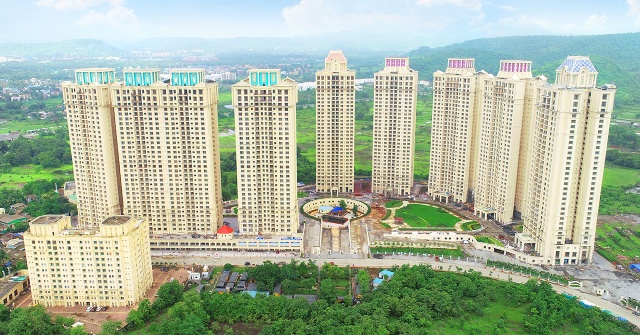by Dr. Niranjan Hiranandani President NAREDCO and Assocham
The Covid-19 pandemic has underlined the fact that the biggest constant in life is change – and home buyer preference, post the pandemic is something that fits the adage. The safest place to be during the Covid-19 pandemic was one's own home, it ensured safety and security. For fence-sitters and renters, this drove home the importance of having one’s own home, as also ensuring it had amenities and facilities that suited the ‘new normal’. As the ‘new age home buyer’ updated requirements, it also defined changing buyer preference through 2020.
The first change in buyer preference is size: with a home also fulfilling the role of ‘work from home’ as also ‘study from home’, it needs to be slightly bigger than the earlier norm – as also flexible to adapt to required changes throughout the day. A home is also a work place and place of study, entertainment, dining, rest, and relaxation, as also wellness and staying fit. The requirements have changed, in sync with the changed circumstances in the ‘new normal’.
Natural sunlight and airy interiors are now given more importance, as is a smart and intelligent design aspect which ensures the home interiors meet the health and wellness requirements too. The buyer profile has evolved in tune with changed circumstances, so we have more numbers of women buyers as also ‘fence-sitters’ who have taken advantage of historic low home loan interest rates as also advantages given by state governments – Maharashtra reduce stamp duty for a limited time period – these have driven many a fence-sitter to turn actual buyer. But, the old set of parameters are no longer ‘top of the list’, and the new age home buyer wants a home that meets the requirements of the post-pandemic life.
Walk to work has gained traction, as ‘work from remote locations’ catches on, so a home in a township where the clubhouse also doubled up as a business centre from where a resident can work, has gained in importance. The integrated townships also gained buyer traction as the advantages of community living during the pandemic-induced lockdowns became apparent. In effect, the new age home buyer’s preferences are for a larger sized home with Flexi-interiors, intelligently planned and designed to allow ventilation and natural light, while also providing safety and security. Add to these aspects like easy availability of daily necessities within walking distance as also facilities for exercise and wellness – the simple answer to this complex set of requirements is buying a home in an integrated township.
The new-age home buyer wants a tech-enabled home, so it has to be powered by services such as Google, with sensors and voice-enabled commands that ensure artificial intelligence-powered home automation options. When it comes to living within this new age home, it is no longer ‘white goods’. The smart home is powered by technology-driven home appliances, which in turn require uninterrupted data service and power back up. Modern, smart appliances to power a safe and secure lifestyle. These in turn, dove-tail into a healthy lifestyle – no just gym and pool, but also walking trails and jogging tracks. Home seekers also look for easy availability of medical and healthcare facilities within the project.
Within the township, the home buyer looks for a green ecosystem that will enhance the living experience within. So, not just a nature trail, but also a meditation centre for mental wellness, complimenting gym and pool for physical wellness. There is increased emphasis on health and hygiene, so built-in sanitization options as also an extra balcony or open space – some go to the extent of requiring a carbon monoxide sensor, as also an electric car point charging station within the township. Being eco-friendly is also about sustainability measures within the township. So, the home preference includes projects which also offer rainwater harvesting, sewage and waste treatment plant, solar panels, and wind-powered electricity generation options.
This is no utopian set of concepts; this is what the new age home buyer wants, in the post-Covid-19 world. Consumer behavior and the patterns are an ever-evolving subject. In a progressive economy like India, we have seen buying patterns alter drastically over the past few years. Not just for real estate, this is applicable across industries. Residential real estate has kept pace with these changing trends, things are no different if we consider the way in which home buying has changed over the past few years.
The pandemic has predictably, speeded up the process. The new-age home buyer is part of the eco-system which has suffered as a result of the pandemic-induced lockdowns. The ‘never before’ set of changes have not just knocked the wind out of businesses, but also impacted lives – and how one lives. Consumer-oriented sectors, including residential real estate, have witnessed major changes amidst dampened market sentiment, in turn impacting spending while also changing spending habits. The last four months of 2020 have seen a recovery in the residential market, this is also a result of pent up demand over the past couple of years evolving into home buying, as a result of the pandemic. We are seeing trends over the past few months of sales driven by increased consumer demand, the sustainability of this trend will set the tone for the next phase of economic growth. The green shoots of recovery in the residential real estate market will be in tandem with overall economic and GDP growth and improvement in the current fragile job scenario.
Covid-19 should be credited as being the catalyst, which resulted in accelerating unprecedented, innovative trends. It ranges from price rationalization in larger markets to adoption of technology-based platforms to enable seamless home buying and selling, while resetting the significance of ‘owning’ a house amongst potential homebuyers.
We are seeing a perceptible change in the layout of apartments to accommodate the ‘new trend’ needs of homebuyers. The trend is for a home that enables seamless working from home. While economic growth is expected to be under pressure in the short term, the trend definitely shows a positive set of synergies for homebuyers going ahead.
Rationalized pricing, historically low home loan interest rates, an extension of credit linked subsidy schemes and developers doling out lucrative schemes – the residential market is unlikely to offer this set of win-win options. How well this is taken advantage of by potential home buyers will define the changed mindsets of consumers, amidst rapidly evolving trends. The definition has changed – both, of the ideal home and the new age home buyer. Indian real estate has met the requirements and is ensuring it offers homes that suit the new trends.
A consumer-centric focus and a business model which ensures flexibility to adjust to changed buyer requirements – perhaps, this is the trend which will power home buying in the near future, as it doing in the present day.


















